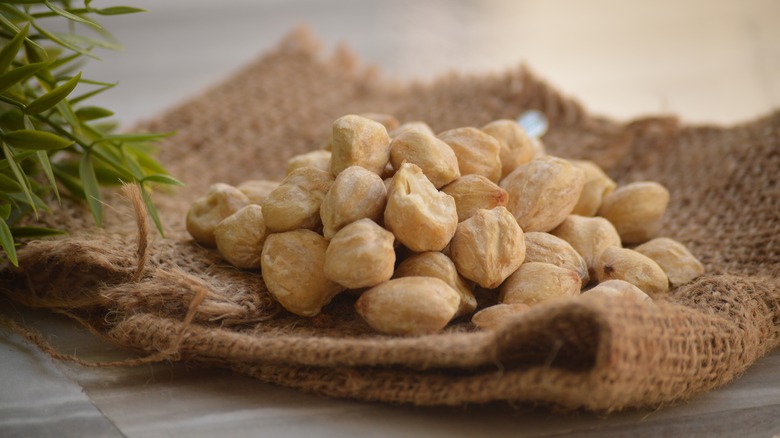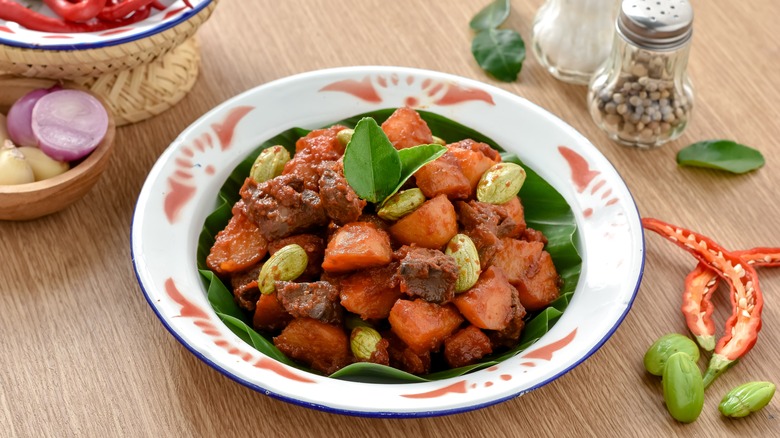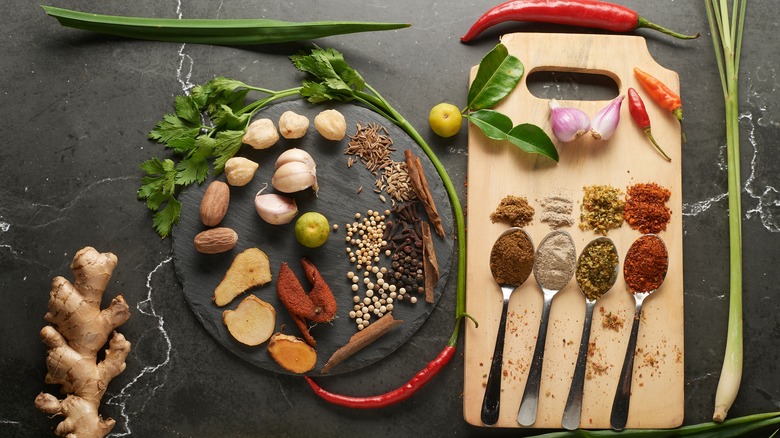What Are Candlenuts Best Used For?
Do you enjoy trying new ingredients and experimenting in the kitchen? Perhaps you also have a weak spot for Asian food? Consider using kemiri, or candlenuts, in your recipes. Also known as Jamaican walnuts, Hawaiian kukui nuts, or candleberries, this ingredient can thicken soups and other dishes while enhancing their flavor. Its nutty, slightly bitter aroma is similar to that of macadamia nuts.
Candlenut is widely used as food and medicine in Asian countries. Some say it can relieve headaches, reduce cholesterol levels, and boost digestive health, but there's not enough evidence to support these claims, according to the University of Texas at El Paso. The actual fruits, or nuts, come from the candlenut tree (Aleurites moluccana), which grows in South America, Indonesia, and other warm regions. Because they are toxic in their raw form, you must roast them and discard the kernels before consumption, per The Seasoned Pioneers.
Apart from that, there are a couple of things you should know before cooking with candlenuts. This versatile ingredient goes well with meat, Hawaiian poke, or raw fish salad, curries, and stews, but it can be tricky to use.
How to incorporate candlenuts into your meals
Kaffir limes, candlenuts, galangal, and other local ingredients are an integral part of Southeast Asian culture. However, these foods are shrouded in mystery for the Western world. A good example is the candlenut, a popular ingredient in Malaysian sambal sauce, Sarawak laksa, beef rendang, and chicken satay. According to The Epicentre, this ingredient is normally used as a thickening agent, but it can also replace macadamia nuts in cooked dishes.
As mentioned earlier, raw candlenuts may cause toxicity. For this reason, they are often sold roasted, with the shells removed. The Epicentre recommends grinding the nuts and then mixing them with other ingredients. For example, you can combine the ground roasted nuts with salt to make a paste called inamona, which goes well with sushi, raw fish salad, and other dishes, notes Southern Living. Alternatively, use them whole and discard the seeds before consumption.
Once roasted, the nuts can be a delicious addition to soups and stews, curry paste, fried fish, or homemade nut milk. Use them in deep-fried dishes for extra crispiness, sprinkle them over salads, or mix them into klepon, onde-onde, and other desserts.
What you should know before cooking with candlenuts
One thing to keep in mind before cooking with candlenuts is that they're quite bitter and can overpower other ingredients. Therefore, you should only use them in small amounts. Also, note that each nut has one or two seeds, according to The Seasoned Pioneers. The seeds contain toxalbumin, a plant protein that can cause the blood cells to clump together, reports a 2018 study published in the International Journal of Agriculture System. Furthermore, they may induce vomiting, diarrhea, and digestive distress, and are toxic to pregnant women, warns the University of Texas at El Paso.
The nuts themselves are highly nutritious, offering more than 4.5 grams of protein and 5 grams of fiber per half cup (via Nutritionix). They also deliver around 5% of the recommended daily calcium intake, 6% of the recommended daily allowance of potassium, and large amounts of healthy fats. The downside is that they tend to spoil quickly because of their high fat content, per The Seasoned Pioneers. When that happens, they turn brown and may not be safe for consumption.
Your best bet is to buy and use white candlenuts. The lighter their color, the fresher they are. If you prefer to purchase raw candlenuts, roast them in the oven for 20 minutes or so at 350 degrees Fahrenheit. After that, store them in a sealed jar and use them over the next few weeks, as recommended by Cook Me Indonesian.


